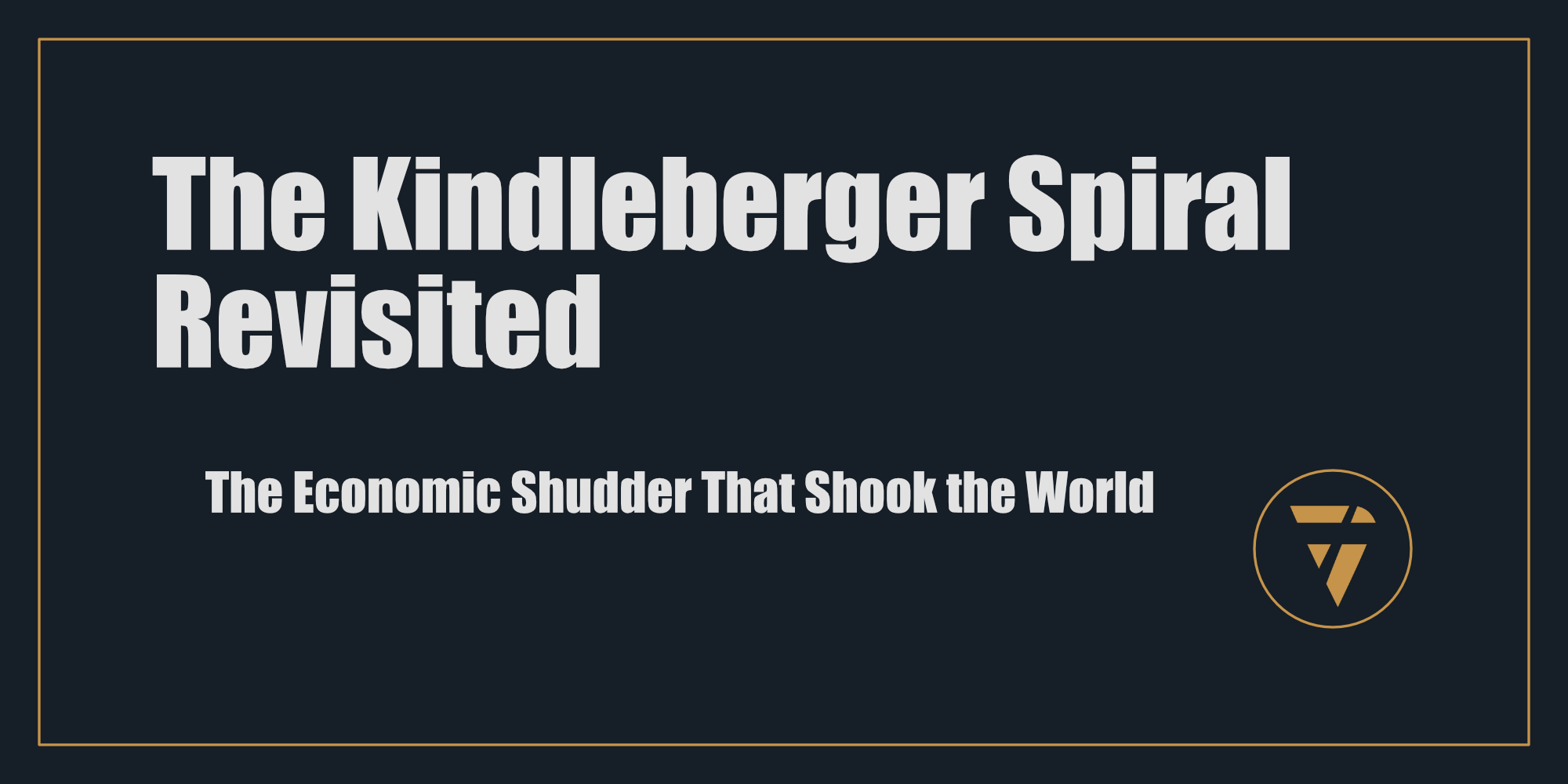The Kindleberger Spiral Revisited

The Economic Shudder That Shook the World
Lessons from 1929–1933 for Today’s Economy
The Kindleberger Spiral—a term coined in reference to Charles Kindleberger’s work on economic depressions—represents the self-reinforcing cycle of economic collapse driven by protectionism, financial panic, and policy failure. The 1929–1933 period stands as a stark warning of what happens when global economies turn inward, with retaliatory tariffs amplifying the effects of the Great Depression.
As someone trained as a trade economist, it is my duty to share the 1929-1933 Kindleberger Spiral, showing the month-month decline in global trade due to the combined factors of the (global) Great Depression and retaliatory tariffs. Smooth Hawley is implemented mid-June 1930.
— Gina C. Pieters, PhD (@ginapieters.bsky.social) 2025-02-01T21:49:21.504Z
The chart referenced by Dr. Gina C. Pieters illustrates month-over-month global trade declines in the wake of the Great Depression and the infamous Smoot-Hawley Tariff Act (June 1930). The lesson it teaches us today is as relevant as ever: economic isolationism, once set in motion, can escalate into an uncontrollable downward spiral.
In an era marked by trade tensions, supply chain disruptions, and financial volatility, it is imperative to understand this historical precedent—not just as an academic curiosity, but as a direct warning for policymakers today.
The Kindleberger Spiral: How It Unfolded
The Kindleberger Spiral describes a series of compounding economic shocks, each worsening the next. Between 1929 and 1933, these factors led to one of the most devastating economic collapses in modern history.
1. The Stock Market Crash (October 1929)
The initial domino fell when stock markets collapsed, wiping out vast amounts of wealth and plunging the U.S. into a financial panic. Confidence evaporated, consumer spending contracted, and industrial production slowed dramatically.
2. Financial Panic and Banking Crises
As businesses and individuals defaulted on loans, banks suffered massive withdrawals. By 1933, nearly half of all U.S. banks had failed. The financial crisis spread beyond the U.S., triggering global credit contractions.
3. Protectionism: The Smoot-Hawley Tariff Act (June 1930)
The Smoot-Hawley Tariff was passed under the misguided assumption that raising import duties would protect American businesses. Instead, it sparked global retaliation, leading to a collapse in international trade.
- U.S. imports dropped 66% between 1929 and 1933.
- Global trade contracted by over 60%.
- Retaliatory tariffs from Canada, Europe, and other trading partners deepened the crisis.
4. Retaliation and the Collapse of Global Trade
As nations responded in kind, international trade plummeted. This further reduced industrial output, leading to massive job losses. In the U.S., unemployment soared to 25% by 1933. The economic implosion was now fully in motion, with no easy way to stop it.
Relevance to Today’s Economy: Are We Repeating the Mistakes of 1930?
The echoes of 1929–1933 can be heard in today’s economic landscape. Trade wars, protectionist policies, financial instability, and economic nationalism are once again threatening global stability. While today’s economy has safeguards that did not exist in 1930 (such as central bank interventions, international trade agreements, and coordinated economic policies), the fundamental risks remain.
1. The Rise of Protectionism
- The U.S.-China trade war has already led to retaliatory tariffs, disrupting global supply chains.
- The resurgence of industrial policy is shifting global trade dynamics.
- Countries are increasingly subsidizing domestic industries at the expense of international cooperation.
2. Financial Instability
- The post-pandemic economy faces inflation, rising debt burdens, and banking vulnerabilities.
- A global credit crunch, similar to the one that exacerbated the Great Depression, remains a real risk.
3. De-globalization Pressures
- The push for "reshoring" and "friendshoring" (bringing production back home or limiting trade to allied nations) risks fragmenting global trade.
- The energy crisis and semiconductor shortages illustrate the dangers of over-concentrated supply chains.
4. Political and Economic Fragmentation
- The rise of economic nationalism threatens global co-operation.
- Fragmented international responses to crises—whether financial, geopolitical, or environmental—mirror the disjointed policy failures of the 1930s.
The Imperative: Learning from History to Avoid Another Spiral
The Kindleberger Spiral teaches one critical lesson: in times of crisis, international co-operation—not protectionism—is the only way to prevent total collapse. Kindleberger himself argued that a "lender of last resort" (such as the U.S. or IMF today) is necessary to stabilize the global system.
So, what must we do differently?
1. Prioritize Trade Co-operation Over Retaliation
- Avoid escalating trade wars. Economic nationalism backfires.
- Strengthen trade alliances rather than breaking them apart.
Perfectly captured.
— George Takei (@georgetakei.bsky.social) 2025-02-03T02:48:29.373Z
2. Stabilize Financial Markets
- Ensure liquidity measures are in place to prevent banking failures.
- Co-ordinate global economic responses, rather than allowing disjointed policies to fuel further instability.
3. Invest in Economic Resilience, Not Isolation
- Strengthen supply chain diversification rather than relying on restrictive trade policies.
- Use targeted, co-operative industrial policy instead of broad-based tariffs.
4. Acknowledge That Economic Stability is a Shared Responsibility
- Kindleberger argued that the Great Depression was worsened by a lack of global economic leadership. Today’s leaders must avoid the same mistake.
A Call to Do Something, Now
The 1929–1933 Kindleberger Spiral remains one of the most devastating cautionary tales in economic history. It was not just the stock market crash or the Smoot-Hawley Tariff that deepened the crisis—it was the compounding effect of bad policy, financial panic, and economic isolation.
Today, we face a world where similar forces are at play. If we are to avoid repeating history, policymakers, businesses, and global institutions must resist the urge to turn inward. Instead, they must embrace cooperation, financial stability, and a commitment to open trade.
History does not have to repeat itself—but only if we choose to break the cycle.
This is what I’m working on. Tell me what you think, I enjoy the conversation! Subscribe and follow the work in real time.
Thanks!
B

The Kindleberger Spiral turned the Great Depression into a global collapse. It wasn’t just bad luck. It was bad policy, panic, and retaliation. Sound familiar? Trade wars, financial shocks, isolationism... we’ve seen this movie before. The question is: will we stop the cycle this time?
PS -






